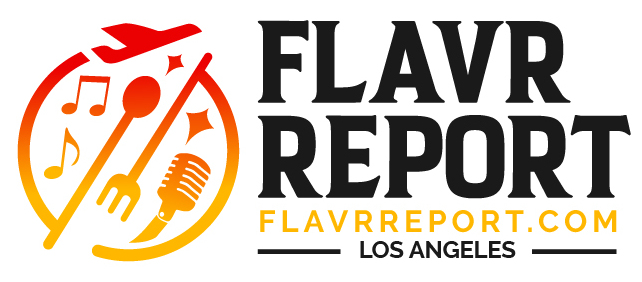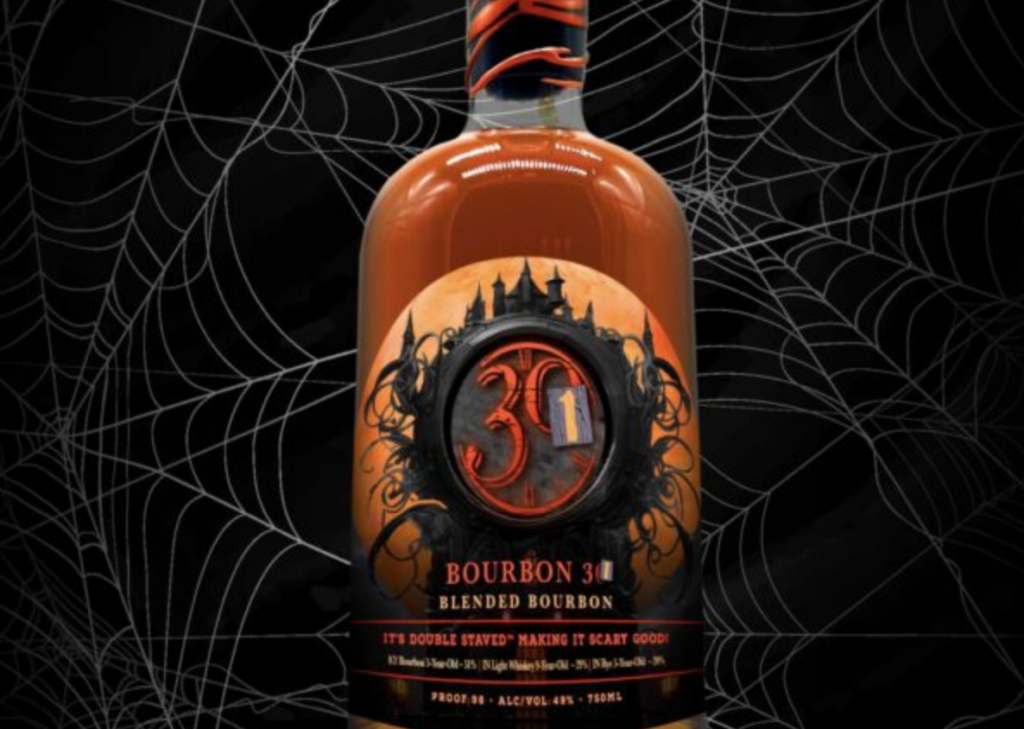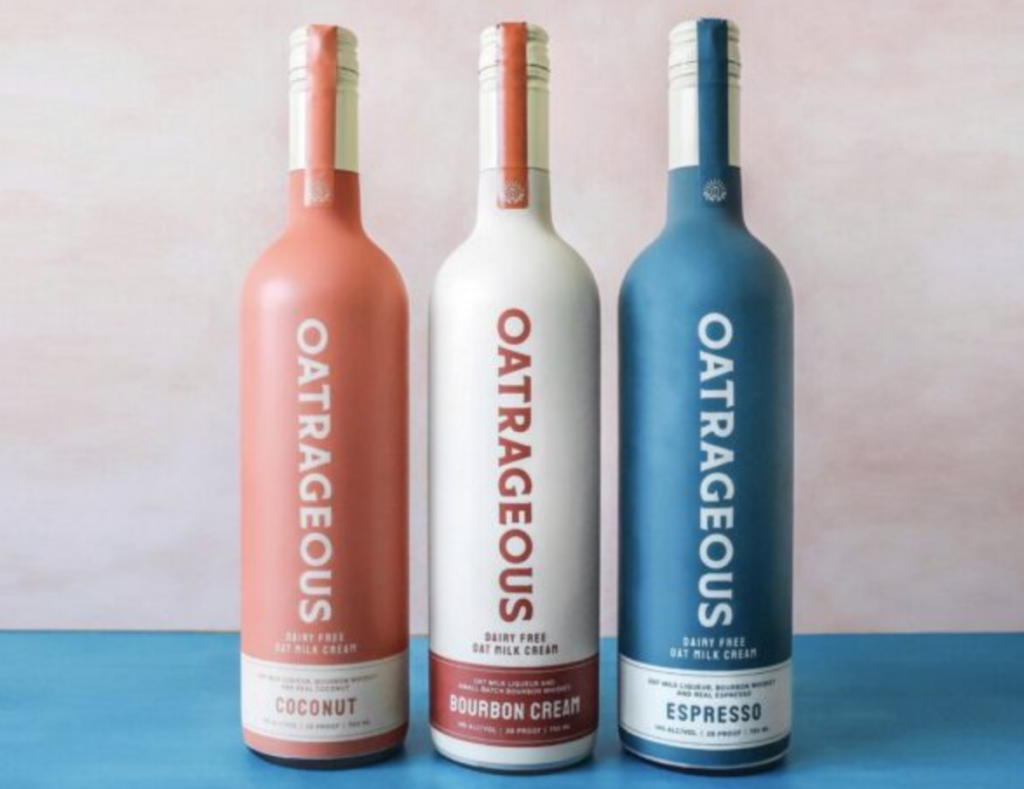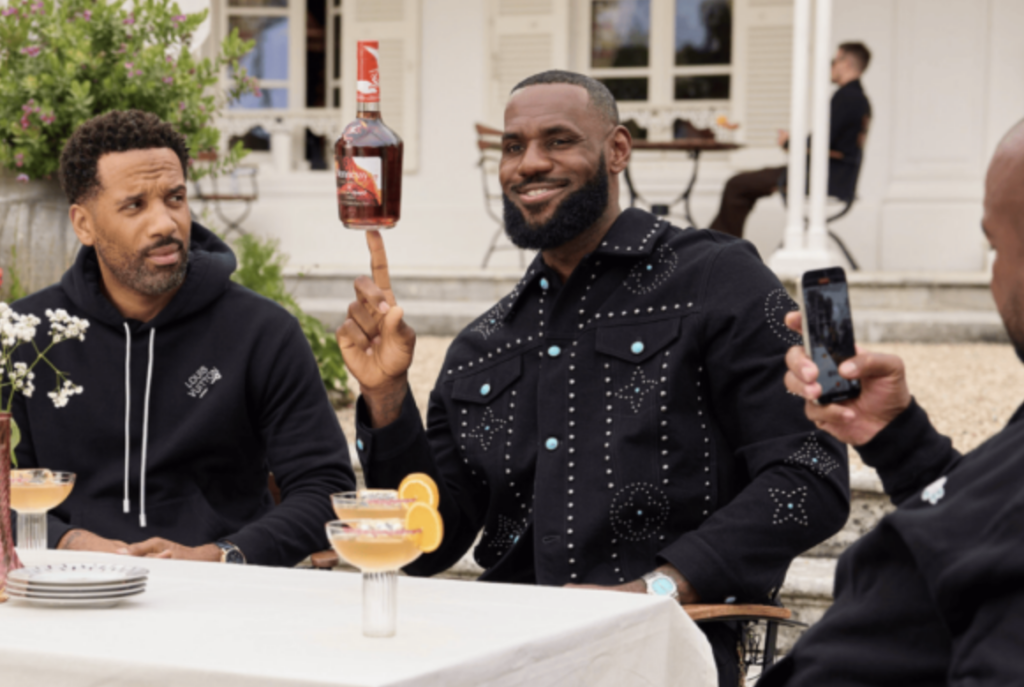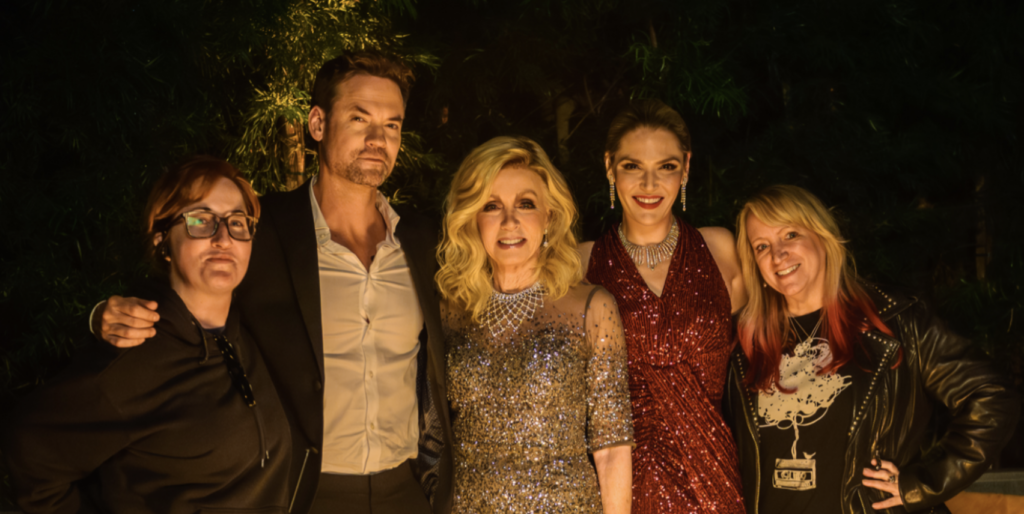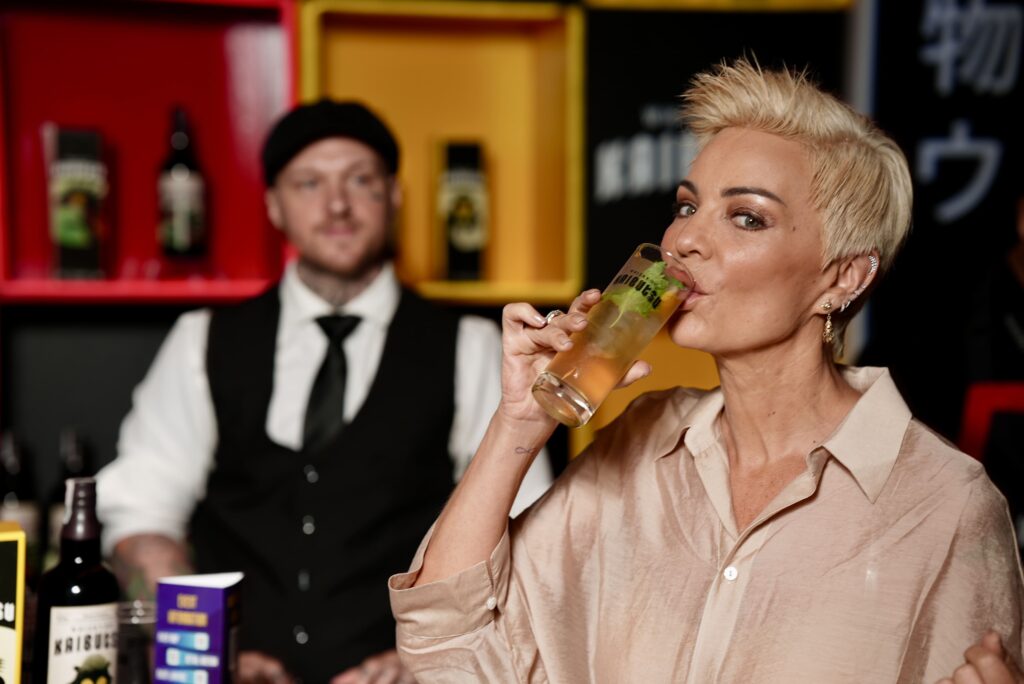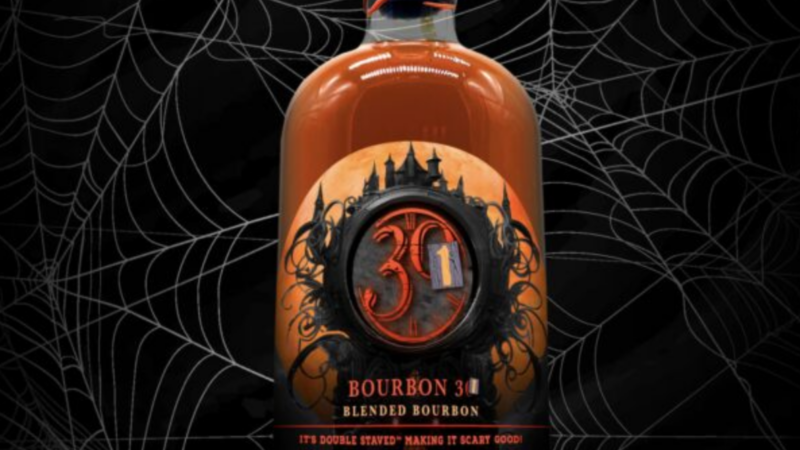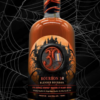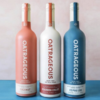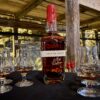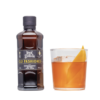Hollywood entertainer Cat Ce On Staying Physically & Mentally Fit In Hollywood
“It’s all about balance”
All round entertainer and producer Cat Ce is a familiar face and name in Hollywood circles.
Known for Producing sold out comedy shows every month at The Ice House, The World Famous Comedy Store etc. She also is a fan favorite guest star on leading shows at Jimmy Kimmel’s Comedy Club Las Vegas.
When not doing stand up comedy, she is a working actress and just celebrated her 50th popular Podcast, which is on spotify and iheart radio.
Cat Ce is definitely productively packing her days with her creativity and manages to stay fit and radiant. She is also a certified Pilates teacher – which explains the body!

Physical stamina is a must for her busy schedule
Her work out regime is very specific to her needs and she swears by swimming to keep her body toned and mind relaxed.
Anyone who has been backstage at a comedy show or eaten at a comedy club will tell you there are specific comfort foods that may not be the healthiest if eaten on a nightly basis. Who doesn’t love pizza or chicken wings and fries at 11pm?
Well, Cat Ce for one stays away from the temptations as much as she can.
“I try to eat healthy & balanced meals.
Smoothies, fruits, veggies, fish or lean meat with great protein are my main nutrients…”
reveals Cat Ce
“…I try to do everything in moderation. I don’t completely cut out bread, I just try to minimize the intake of carbs, get enough protein, and never deprive myself. I have a balanced lifestyle. Staying active with daily exercise, and swimming is my daily routine. A solid workout will obviously help you stay in shape, but also helps me manage stress.

Cat Ce wears many hats and works out regularly to stay fit
I keep physically strong, which leads me to feeling mentally strong, this also guarantees a good night sleep — which is also key.
The simple basic fundamentals of taking care of ourselves is my mantra, this will lead to success. I believe.”
Something tells me Cat Ce is right!
To catch Cat Ce performing check out her upcoming shows in Los Angeles Hollywood Improv Jan 15th and 19th, the Comedy Store Jan 15th and Jimmy Kimmel’s Comedy Club in Las Vegas on Jan 20th!
YOU MIGHT ALSO LIKE
This Halloween in LA: Scary-good whiskies: J. Mattingly 1845 Welcomes Fall with New Whiskey Offerings
Scary-good whiskies this Halloween: J. Mattingly 1845 Welcomes Fall with New Whiskey Offerings
J. Mattingly 1845 Distillery is debuting scary-good whiskies this fall, with its first fall spiced Bourbon 31 Blended Bourbon and the ability to customize your own whiskey for your Halloween festivities through its J. Mattingly 1845 craft your bottle program.

Screenshot
Bourbon 31 Blended Bourbon is a play on the brand’s Bourbon 30 Bourbon brand and this limited-edition release was created for the Halloween season.
Bourbon 31 is a blend of three whiskies which have all undergone J. Mattingly 1845’s Double Staving™ process and the blend consists of 51 percent Bourbon, 29 percent Light Whiskey and 20 percent Rye Whiskey. Double Staving is a proprietary process used by J. Mattingly 1845 Distillery that gives the whiskey inside the barrels additional surface exposure to charred barrel staves to impart more flavor and color.
The Double Staved Classic Bourbon used in this blend has just scored a 96 from famed Whiskey Bible author Jim Murray.
The Bourbon 31 Blended Bourbon was created by J. Mattingly 1845’s team of expert blenders to reflect the flavors typically associated with fall. “When we blended these three whiskies, we were looking for a flavor profile that reflects flavors typically associated with fall, such as pumpkin and cinnamon while matching the light-hearted fun we’re having by changing the brand name from Bourbon 30 to Bourbon 31 to celebrate the Halloween season,” said Harry Richart, president, J. Mattingly 1845 Distillery.
Tasting notes for this bourbon describe it as having a nose of nutmeg, cinnamon, vanilla and walnut, with the flavors of brown sugar, cinnamon, and fall baking spices on the palate. On the finish, pumpkin bread, baker’s chocolate and seasoned oak are prevalent.
Bourbon 31 is available online and at the J. Mattingly 1845 Distillery in Frankfort, KY. Suggested retail pricing is $60 for a 750 mL and it is 98 proof.
J. Mattingly 1845 Custom Whiskey Program is the “Choose Your Own Adventure” of the whiskey world by allowing the buyer to choose between double staved™ bourbon, light whiskey or rye whiskey recipes, select their bottle shape, customize their own label, and even choose their own wax color from every color of the rainbow! This program is available online and in person at the Distillery and can result in some frighteningly fun labels and Halloween-themed wax colors. Imagine expressing your innermost devilish (or angelic) thoughts on the bourbon bottle you give your favorite boo.
Pricing for the custom bottles start at $120 for a 750 mL bottle and shipping is available to 46 states.
About J. Mattingly 1845 Distillery
The Mattingly family has been synonymous with distilling in Kentucky for more than two centuries, having a hand in the development of at least nine separate distilleries in the Commonwealth.
It all started in 1845, with John Graves Mattingly’s first distillery in Marion County, Kentucky, Registered Distillery #2.
In 2010 Jeff Mattingly took up the family mantle and started his own craft bourbon business. Today, Jeff’s son Cameron has joined the team as Vice President of Production, continuing the legacy into the latest generation for J. Mattingly Distillery 1845 in Frankfort, Kentucky. Together father and son offer their proprietary double staving process as well as a custom bourbon blending experience unparalleled in the spirits industry, available on-site in Frankfort or online at https://jmattingly1845.com/build-a-bottle/
LA wants “Indulgence without compromise” Dairy-free, plant-based: OATRAGEOUS Oat Milk Liqueur
Dairy-free, plant-based: OATRAGEOUS Oat Milk Liqueur from the Makers of Misunderstood Whiskey Co.
OATRAGEOUS Oat Milk Liqueur proudly announces the launch of its innovative, dairy-free cream liqueur line, setting a new standard in the cream liqueur category. Crafted with the highest quality ingredients, OATRAGEOUS offers a plant-based alternative that is free from dairy, gluten, lactose, high fructose corn syrup, artificial sweeteners, and seed oils.
OATRAGEOUS is proudly the first portfolio of Oat Milk Liqueurs to hit shelves in the United States.
“We couldn’t be more excited to share OATRAGEOUS with the world,”
JD Recobs
Co-Founder of OATRAGEOUS.
“There are a lot of consumers out there who want to enjoy cream inspired products but are limited by dietary restrictions, lifestyle choices, or simple taste preferences.”
OATRAGEOUS will debut three core SKUs this fall: Coconut, Espresso, and the world’s first Dairy-Free Bourbon Cream (14% ABV).
OATRAGEOUS Oat Milk Liqueur is designed for those who seek indulgence without compromise. OATRAGEOUS delivers a light, smooth, and creamy experience while boasting less sugar and fewer calories versus traditional cream liqueurs. The expressions are crafted with 100% sustainably sourced, non-GMO oats, smooth bourbon whiskey and real ingredients.
“We are thrilled to be able to open doors for consumers by giving them delicious, dairy-free options that are produced transparently and made with significantly less sugar compared to what is currently available on the market,” added Co-Founder Chris Buglisi.
While OATRAGEOUS is best enjoyed simply chilled or over ice, the products are a great base for dairy-free alternative cocktails such as the Dairy-Free Espresso Martinis (or EspressOAT Martinis) and Dairy-Free Pina Coladas!
“We aspire to create exceptional products that prioritize both people and the planet,” said Emily Recobs, Co-Founder of OATRAGEOUS. “With a commitment to sustainability, we carefully craft every bottle using clean, high-quality ingredients, keeping the environment in mind every step of the way.”
Key Features:
- Bourbon Based Cream Liqueur: Made with premium bourbon whiskey; distilled at the historic old Seagrams distillery by Ross & Squibb Distillery (MGP) in Lawrenceburg, Indiana.
- Dairy-Free and Gluten-Free: Perfect for those with lactose intolerance, choosing a dairy-free lifestyle and with gluten sensitivities.
- Plant-Based & Vegan-Friendly: A delightful option for those following plant-based diets.
- Made With Clean Ingredients: No seed oils, high fructose corn syrup or artificial sweeteners. Kosher.
- Less Sugar & Calories: OATRAGEOUS contains 30% less sugar & calories than the leading cream liqueur brands. Proudly only 100 calories per 1.5 oz serving.
- Sustainably Sourced: Committed to environmental responsibility, using non-GMO oats.
- Transparently Produced: The company proudly discloses nutrition facts on their website.
Core SKUs:
- Coconut (14% ABV) – A tropical delight with the smooth, creamy taste of real coconut.
- Espresso (14% ABV) – A rich, bold flavor infused with the essence of Arabica espresso.
- Bourbon Cream (14% ABV) – A classic, luxurious blend of small batch bourbon whiskey and dairy free oat milk cream.
Availability and Pricing:
OATRAGEOUS will retail at $27.99 and be available for sale nationally online (www.drinkoatrageous.com) and in liquor stores in select markets including: FL, MA, NJ, NY, and TX.
About OATRAGEOUS Oat Milk Liqueurs
OATRAGEOUS Oat Milk Liqueur was created to bring fun, innovative dairy-free cream liqueurs to the world with a focus on quality and sustainability. OATRAGEOUS is a brand of Buglisi Recobs Group, also owner of Misunderstood Whiskey Company, a NJ based innovative whiskey brand delivering approachable spirits to its customer base which includes its Ginger Spiced Whiskey and America’s Original Dairy Free Oat Nog seasonal release.
Lakers Fans: Basketball legend Introduces ‘Hennessy Limited Edition by LeBron James’, available September 30
Lakers Fans: Basketball legend Introduces ‘Hennessy Limited Edition by LeBron James’, available September 30
Hennessy, the world’s leading cognac, and basketball legend LeBron James are proud to unveil ‘Hennessy Limited Edition by LeBron James’ – a V.S bottle collaboration available globally starting on September 30, 2024.
This first-time collaboration between Hennessy and LeBron James unites two giants in their respective fields and brings an unexpected twist to fans and the industry alike. Their mutual respect, shared drive for excellence and commitment to pushing boundaries makes this partnership a celebration of greatness and serves as a reminder that Hennessy is made for more.

“As an admirer of Hennessy and its iconic brand, I’ve always appreciated its commitment to basketball and how it celebrates the sport’s influence on and off the court,”
lebron James
“I was fortunate enough to visit the Maison in Cognac a while back, and seeing the care and craftsmanship that go into creating each bottle was pretty incredible. This collaboration represents a shared sense of dedication and discovery coming to life for everyone to enjoy.”

Hennessy Limited Edition by LeBron James
The limited-edition bottle features fresh, vibrant and distinctive designs which nod to James’ impact on and off the court. Both the bottle and gift box showcase an illustrative portrait of James in purple and orange. The iconic Hennessy Bras Armé is reimagined, sporting a sleeve as a tribute to James and intertwined with his trademark crown. The blend will remain the same and continue to deliver on the bold, yet smooth character that has made Hennessy V.S one of the most popular cognacs in the world.

Hennessy Limited Edition by LeBron James
“We are elated to officially welcome LeBron James to the Hennessy family after many years of mutual admiration and friendship,” said Antoine Varlet, Senior Vice President, Hennessy U.S. “LeBron is not just a basketball star, but someone who redefines boundaries in sport, style, culture and beyond. This partnership is more than just a collaboration, it’s a statement about what’s possible when two cultural icons come together.”

Hennessy Limited Edition by LeBron James
To highlight the cognac’s versatility, James put a fresh twist on the Hennessy Margarita cocktail featuring Hennessy V.S, lime juice, orange liqueur, orange juice and agave syrup. The addition of orange juice comes directly from James, inspired by a recent tasting experience in Cognac where he experienced the different possibilities of the spirit and discovered that Hennessy is enjoyed more than just neat, complementing a wide range of serves. This follows the release of Hennessy’s “Made for more” campaign, which shows how any drink or occasion can be made ‘more’ when you add Hennessy. Find the full recipe on hennessy.com.
The ‘Hennessy Limited Edition by LeBron James’ V.S will be available for purchase starting September 30, 2024.
You Might also like
-
SoCal, Has a Bee’s Role Changed? How Science makes plant-based honey
Southern California wonders how bees are involved? How do they actually make plant-based honey?
Traditionally bees have a massive role in producing honey. So, removing their support seems unrealistic, or does it? And sure, scientists can try to explain it. But can someone explain it in simple terms, in a way that a curious foodie could understand it?
Let’s find out in an exclusive interview with Mellody Food’s Darko Mandich.
Darko Mandich is a food entrepreneur in San Francisco. After spending almost a decade in the European honey industry as a business executive, Darko committed to reimagining the honey industry to become sustainable. Darko immigrated from Europe to California to launch Mellody, the world’s first plant-based honey brand. Darko is an advocate of saving the bees and wild pollinators.

Mellody Food’s Darko Mandich
Recently, I had a chance to talk with Darko.
From a science point of view, how are you creating plant-based honey products?
The process has to start with philosophy. When people think about science, engineering and process, what comes to their mind is what’s the science? What’s the engineering behind that? What’s the process of making something?

But I would argue that every process, every science starts with a philosophy in the first place. So for us, our philosophy was there’s honey made by the bees in the market, the real ones, that product quality-wise is amazing, but has negative baggage in terms of how it’s made. Next to that, there’s fake honey. There’s basically adulterated honey that’s made by people taking fraudulent activities and blending a little bit of real honey and a lot of rice syrup.
That’s done outside of the US by people trying not to get caught. The third group are vegan honey alternatives, made out of tapioca, dates, maple, pure sugar. These products are just not honey. Trying to impersonate honey, but it’s not honey. It’s a legit product. It’s in the market. People can buy it.
What was missing is the fourth group, which is the category that we pioneered.
Honey, the product that has the composition of real honey but that doesn’t have any rice syrups, nothing that doesn’t belong to honey. But, it’s not made by the bees and therefore by default is vegan and plant-based. So that was the category that we started, and we didn’t start it only for vegans. Obviously vegans are our early adopters. They love what we’re doing. I’m vegan myself. But I want this to be an inclusive company and brand, and therefore we launched this for everybody. For everybody who likes delicious and nutritious foods. By choosing this you’re basically voting for those little creatures to survive on this planet.

You asked me about the process.
You wanna make honey only from something that in nature that touches bees and honey, it’s very strict. Our team studied a lot of different honeys, the different anatomy of the bees, the science behind honey production. Bees land on a flower, they suck up nectar. And there’s a couple of things in a bee’s anatomy. We came up with this proprietary process where we interact with the plants, we take different parts of the plants.

What’s really exciting and cool is we can take the whole plant, break it into different ingredients, and take parts of the plant that maybe bees don’t have access to, like its roots. So we take different ingredients from different plants. We have more than 30 different plants in our product that we launched and we created this process that is basically mixing all those ingredients in a food facility in a regular culinary approach, and basically create a product that looks, tastes, and behaves like honey.
Is your honey currently available at Eleven Madison Home?
This is the product from a direct to consumer collaboration. We just launched with three Michelin star, Eleven Madison Park in New York City.

Eleven Madison Home’s The Specialty Tea and Honey Box featuring Mellody Honey
Yeah, the honey is currently available. The Specialty Tea and Honey Box launched for the Mother’s Day collection and Earth Month.
It’s a specially curated box of artisanal teas coming from different parts of the world with honey and also amazing, shortbread cookies. All plant-based, also made with our honey. That’s available right now
Sometime very soon a standalone jar [of honey] will also be available to Eleven Madison Home.

Eleven Madison Home’s The Specialty Tea and Honey Box featuring Mellody Honey
Tell us again what’s available, how to find it; and how to follow you and support you.
Yeah, follow us on Instagram and TikTok at MellodyFoods
In terms of purchasing, head to ElevenMadisonHome.com and you can purchase it there.
Saving the bees is learning more about them. Learning more about pollinators and you can do that on our social media.
And finally, if you’re equally passionate about bees and plants as we are, ask your favorite restaurant to reach out to us to offer Mellody in your favorite restaurant. It can be a vegan restaurant on non-vegan.
We are gonna work with all the restaurants that reach out to us where people ask to see our product offered, either on the menu, either within a meal, or just if you order a cup of tea and you want a side of Mellody.
Post Views: 461 -
Valentine’s Day: 10 Yummy Food and Beverage Gift Ideas
10 Unique Food and Beverage Gift Ideas for Valentine’s Day
Valentine’s Day is just around the corner, and we all know the drill — flowers, chocolates, candy, rinse and repeat.
Although a lovely sentiment, it’s not exactly the stuff that legends are made of, right?
So, we dove deep into the web and came up with a list of food and beverage items that say “I love you” in an unconventional and out-of-the-box way.
These gems are not your garden-variety tokens of affection; they’re off-beat, they’re fun, and they scream “Be Mine” in the most deliciously distinctive ways.
From quirky snacks to sippable surprises, here’s our list of
10 unique food & beverage gifts for Valentine’s day

Olive & Cocoa Chocolate Heart Pretzels
Imagine a dozen crunchy pretzels, each smothered in a dreamy mix of milk and white chocolate and then dotted with playful pink hearts.
Both salty and sweet, as most relationships are, these tantalizing treats arrive in a chic, handcrafted wooden crate, tied up with a red ribbon, and just in time for Valentine’s Day.
Trust us, they are the yummiest way to say “I heart you!”

BareOrganics Ashwagandha Root Powder
Ever heard of Ashwagandha Root?
It’s like nature’s own love boosting superfood – the Ayurvedic secret often dubbed as a ‘natural viagra’ for both ladies and gents. And, it’s not just about cranking up your libido and vitality; it’s also great for knocking down stress and anxiety, which are the usual, and unfortunate romance killers.
Sprinkle some of this 100% USDA Certified Organic magic powder into your daily routine and get ready for a more sumptuous and satisfying sex life.

Lou’s Heart Shaped Chocolate Chip Cookie & Heart Shaped Pizza
Double the love straight from the Windy City!
We’re talking about Lou Malnati’s heart-shaped deep dish pizza for two, with your pick of cheesy goodness or savory sausage, paired with a giant heart-shaped chocolate chip cookie. And this cookie isn’t just any cookie – it’s the same recipe used in Lou Malnati’s iconic pizzerias.
It’s like a big hug from Chicago, sent straight to your door this Valentine’s Day. Who can resist that?
Click here for Taste of Chicago

Be My Huckleberry Hand Pies
Get ready to fall hard for these delicious hand pies, bursting with juicy Montana huckleberries and blueberries.
Elle’s Belles country kitchen whips up each small-batch bakes with love, making these some of the tastiest treats you’ll ever devour.
And here’s the kicker — each pie is handcrafted, ensuring your gift is as unique as it is delicious. But remember, all good things take time, and these handmade beauties need 24 hours to bake and package before heading your way.
Click here to check out Huckleberry Hand Pies
Dora’s Heart-Shaped Ravioli for 2

Whisk your taste buds to Italy on Valentine’s Day with Nonna Dora’s heart-shaped ravioli, a beloved staple for 25 years at New York City’s I Trulli!
Handcrafted with special Italian flour, these beauties get their charming stripes from beet puree and are filled with creamy Italian ricotta. Boil them up, sauté with butter and sage, and voilà—a romantic dinner to remember.
Behind these gems is “Nonna Dora” Marzovilla, a pasta-making legend for over 70 years, now delighting NYC with her own spot, Nonna Dora’s Pasta Bar. It’s like getting a squeeze from an Italian nonna in every bite!
Click here for Dora’s Heart-Shaped Ravioli

Jerky Heart
Why settle for the same old same old chocolates in a heart shaped box when you can gift BEEF JERKY instead!
The Man Crates Exclusive Heart Box includes: 1 Dave’s Pepperoni Pork Stick, 1 Dave’s Wine Pork Stick, 1 Dave’s Orange Habanero Pork Stick, 1 Dave’s Honey Bourbon Formed Beef Bit, 1 Dave’s Honey Root Beer Formed Beef Bit,
1 Dave’s Sesame Ginger Formed Beef Bit, 3 Cajun Beef Sticks, 2 Teriyaki Beef Sticks, and 3 Habanero BBQ Beef Sticks to highly satisfy your most beloved carnivore.
And, for that extra touch of testosterone, you can have the box “gift wrapped” in red colored duct tape.

Tipsy Bubbly Rose
Yup! That’s right folks… a phallus shaped bottle of pink sparkling rosé wine for that very special someone. We’ll just leave it right there…
Click here to visit Tipsy Brand

Candied Bacon Bouquet
What better way to say “I love you” than with an elegant bouquet of long-stemmed candied bacon shaped roses. Perfect for anyone who can’t resist the sweet and salty combo of maple syrup and bacon, each rose shaped flower is topped with a red sugar coating to keep those roses a brightly blooming red.

Meat Card
Why settle for a Hallmark card when you can have your love note laser engraved on a 4″ x 9″ sheet of meat?
Manly Man Co. offers customized greetings of 100 characters at max on a 100% edible sheet of savory beef jerky.
Made to order and vacuum sealed for freshness, it’s the yummiest way to share your affection.

Heart-Shaped Tea Bags
Seeking a little romantic tea time with your honey?
Jacqueline Aliotti’s heart-shaped tea bags are the perfect choice to heat things up. Inspired by her childhood in Lyon, France, surrounded by the warmth of her parents’ tea shop, each boxed set includes 5 English Breakfast, 5 Earl Grey, and 5 White Berry tea bags, perfect for sharing a romantic afternoon with your Valentine.
Post Views: 681 -
Come Taste Silverlake’s Casita Del Campo May 15 to Celebrate 60 Years in Business
Come Taste Silverlake’s Casita Del Campo May 15 to Celebrates 60 Years in Business
There is truly no place or space like Casita Del Campo.
Since May 15th, 1962 when the restaurant first opened, by artist and dancer, Rudy Martin Del Campo, who appeared in the original West Side Story film, this restaurant has created moments and memories that transcend time.
Casita Del Campo was a business idea but Rudy also wanted to create a haven for his creative community, a unique and thoughtful space where they could come together, enjoy a meal and some entertainment.

Casita Del Campo has become an institution in the community of Silverlake and the city of Los Angeles.
The Del Campo family that continue to run and oversee all operations are proud and appreciative to be able to celebrate 60 years of business and patronage on Sunday, May 15th, 2022.
Related: Silverlake’s Casita Del Campo maintains its charm, its originality and its creativity
Throughout these past few years of hardship near and far, it is truly a testament to the power of community that Casita Del Campo continues to stand, tall and proud and bright and bold.
It is such a rare occurrence these days to be able to maintain a restaurant let alone have success for 60 years, but Casita Del Campo has continued to grow, to shine and to find its way amidst the chaos.
The clients that pour in, both regulars and newcomers alike, call this place a second home, it is an oasis in the center of the city where many come to seek solace, to have a laugh and to enjoy one of the many nectars of a joyous life, a solid margarita.
Rudy Del Campo, of Mexican descent and his beautiful wife, Nina Del Campo, of Colombian descent ran Casita Del Campo their whole adult lives, expanding by buying neighboring properties and continuously seeking new motives and ways to make the business more successful.
They were married for 40 years, completely involved in everyday operations and were avid supporters of the LGBTQ community and the neighboring community of Silverlake and beyond.
As both Rudy and Nina passed away some years ago, their son, Robert Martin Del Campo, continues the legacy of this magical restaurant and has dedicated his efforts to making it stay current with the times and continuously improving in every possible way.
As Robert puts it:
“this place was made with love and that is the most important ingredient of how it still runs to this day.”
His creative passion for the arts is evident in all the pieces you see in each room and his wife, Gina Martin Del Campo, an artist who studied at UCLA is the incredible mastermind behind all the stained-glass patio tables that many come to the restaurant to sit at while enjoying the beautiful SoCal weather.
Related: Los Angeles most colorful Mexican Cuisine at El Granjero Cantina
A rarity in the ever evolving, trendy neighborhood of Los Angeles, Casita Del Campo has maintained its charm, its originality and its creativity. The staff and the vibe has truly remained very similar to the day it opened on May 15,1962.
The music flows through an epic sound system, the drinks are constantly being shaken behind the bar and the waiters have become like family to many local aficionados. Of course, the sizzling and delicious food that comes from the kitchen is a huge part of the love for Casita Del Campo, and the original recipes and cooking practices have remained consistent since the day the restaurant opened 60 years ago.
Every morning, fresh vegetables are chopped for the salsa and dishes, the guacamole and chips are made fresh on the daily as well as the home-style soups passed down from Grandma’s recipes.
As featured in the Casita Del Campo’s “60th Anniversary Menu”
some favorites include the Casitas Special, a sharable appetizer served with six mini tortillas topped with chicken or beef, accompanied by sour cream, guacamole, pico de gallo and beans.
The Sizzling Fajitas are fun and delicious, the Carnitas are tender and packed with flavor and the Enchiladas are an absolute must. Of course, the meal should always end with Casita Del Campo’s homemade Flan which is just sweet, sweet perfection.
The bar is led by Antonio Cruz, who created some special Anniversary Cocktails including a Mexican Mule which is made with Don Julio Tequila, ginger beer, a splash of soda water, fresh lime juice and mint and the refreshing and popular Blackberry Margarita made with Don Julio Tequila, muddled blackberries and raspberries, agave and fresh lime juice.
Obviously, you can never go wrong with the Classic Casita Margarita made with Tequila, our freshly made lime juice and a little triple sec. The original creative Margarita flavors include Pomegranate, Guava, Ginger, Strawberry, Mango, Melon, Watermelon, Peachand for a little kick, Jalapeño.
The Casita Del Campo bar
The Casita Del Campo bar is a full bar and although the Tequila is the main star, every cocktail is a winner.
The Casita Del Campo Cavern Club Theatre
The Cavern Club Theatre downstairs hosts a wide array of comedy, drag-strip and holiday shows that bring people near and far who are fans of the acts including many celebrities who enjoy a good laugh.
It is an experience that one can have only at Casita Del Campo. You grab a drink, head downstairs and enjoy some of the best laughs you will ever have. The theatre is run by Mr. Dan, who is part of the family as he has been there for over 30 years and brings new customers and faces to the restaurant with every show. The family is very appreciative to have him and to be a supporter of something so unique and embraced in LA.
To celebrate 60 years is to celebrate something many restaurant business owners never get the chance to and that means the world to the Del Campo family. They have celebrated special occasions, momentous moments and have created life memories together here and they wouldn’t choose any other place to be.
The passion, the love and the attention to detail is obvious in every corner of the large space.
Everyone that walks into Casita Del Campo becomes a member of this joyous, creative and fun family and you better believe they will be back. It is not one thing, one dish or one person that makes this restaurant what it is, but it is the combination of so many ingredients and efforts that vividly showcase what family and legacy means. Life’s worries stay at the door once you arrive, have a seat at the incredible mosaic patio table by the fountain, enjoy an Anniversary cocktail and a smile from our staff, because if nothing else, Casita Del Campo is here for you and is here to stay.
60 Years of life, love, passion, art, good food and drink at Casita Del Campo and a lifetime to go!
Casita Del Campo will celebrate 60 years on Sunday, May 15th, 2022 for all the amazing patrons from 12:00 pm noon to closing with live entertainment, special guests, margaritas and lots of smiles.
Casita Del Campo is open every Monday through Thursday from 11:00 am to 10:00 pm, Friday and Saturday from 11:00 am to 12am and then Sunday from 11am to 10pm.
There is a special 60th Anniversary Menu offered every day at 4:00 pm to closing, a Lunch Menu offered from 11:00 am to 4:00 pm from Monday through Friday and a Brunch Menu offered on Saturday and Sunday from 11:00 am to 3:00 pm.
Casita Del Campo offers Happy Hour every day from 3:00 pm to 6:00 pm. Casita Del Campo has special rooms available for private parties and celebrations.
For more information please visit http://casitadelcampo.net or call 323.662.4255. The address is 1920 Hyperion Ave, Los Angeles, CA 90027.
Post Views: 501
